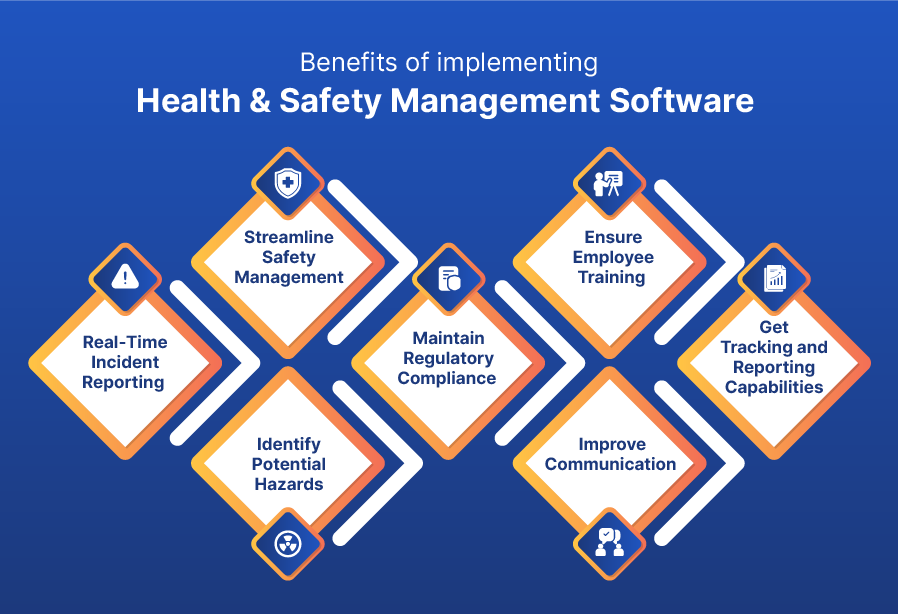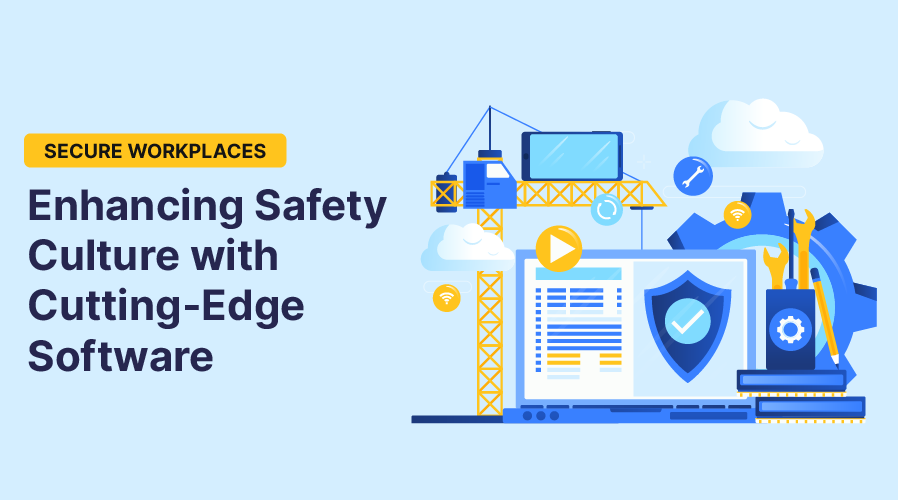Organisations can effectively implement safety protocols and mitigate risks with cutting-edge software solutions.
An efficient and productive workplace starts with safe and healthy employees. Creating and prioritising a culture of safety in the workplace is not only your moral obligation but also a legal requirement, your duty of care to enhance employee well-being.
However, in a time when technology permeates every aspect of our work, workplace safety goes beyond the traditional approaches of reading safety manuals and conducting training sessions. To be truly safe, businesses need to instil a culture of safety within the organisation with the use of cutting-edge software.
Health and safety management system software is an excellent solution designed to meet the health and safety needs of a modern workplace. With its tracking, reporting, and effective risk management capabilities, safety management system software helps you take a preventative approach to minimising occupational hazards, track employee safety, and stay compliant.
Let’s explore what OHSM software is and how it can help enhance safety culture within your workplace.
The Importance and Challenges of Workplace Safety
To say that occupational health and safety is critical for employee well-being would be an understatement. A workplace that prioritises employees by minimising the risk of illnesses, injuries, and health conditions is equally crucial for the success of a business.
A safe and secure workplace not only mitigates risks but contributes to increased employee productivity, high retention, and reduced costs for the business associated with workplace accidents. Not to mention, organisations that commit to safety enjoy a good reputation among the major stakeholders and ensure regulatory compliance with international standards and protocols.
However, the one-size-fits-all traditional approach to workplace health and safety can often fail to address the growing needs of an organisation. Relying on manual training and management processes can be time-consuming and labour-intensive, making it difficult for the business to scale. Additionally, identifying potential risks and their root causes requires expertise and a proactive approach, which might not be available within the organisation.
Finally, since health and safety management safety standards and regulations can change regularly, keeping up with the changes and maintaining compliance becomes difficult, affecting the business’ growth and efficiency.
That is why having automated software for a safety management system in place lets you enhance risk mitigation, safety, and compliance within the workplace.
What is Health and Safety Management System Software?
Safety management system software is a suite of digital tools designed to plan, manage, and implement health and safety protocols within an organisation.
The software systematically addresses and reduces potential workplace hazards by capturing data, implementing safety best practices, automating employee training, and ensuring compliance with international regulatory benchmarks. In fact, the software can be customised to meet the needs of various industries, from IT to healthcare, and scale easily as your business grows.
With the use of a flexible software system, your organisation can ensure that your employees have the right skills and tools to maintain a safer work environment.
How Does Health & Safety Management Software Help Create a Safety Culture?
Here’s how cutting-edge software technology can help your organisation build a culture of health and safety within the workplace.

1. Get real-time incident reporting
Health and safety management system software offers real-time incident reporting capabilities to allow employees to report any injuries, incidents, and near-misses immediately. This not only promotes prompt reporting and transparency; it also allows organisations to respond quickly and identify the root cause of incidents.
This way, it helps prevent potential accidents and encourages employees to take charge of their own safety.
2. Streamline safety management
Instead of relying on the traditional approach to safety management with manual documentation, tracking, and reporting, robust software streamlines processes to save time and minimise errors. From employee training to risk assessment and compliance, when each aspect is automated with the software system, it boosts productivity, removes inefficiencies, and assists in better health and safety planning.
3. Identify potential hazards
With access to real-time data and analytics on past incidents, organisations can effectively identify potential workplace hazards and assess the risks involved. The software can schedule regular safety assessments, send alerts, and assign responsibilities, allowing organisations to implement control measures to mitigate potential risks and save costs.
4. Maintain regulatory compliance
The best health and safety management software allows companies to remain up-to-date with the ever-evolving industry safety regulations and stay compliant. The system can easily track compliance requirements and update the software with recent changes in the safety standards, keeping you informed at all times.
Further, OHSMS or EHS systems can generate compliance reports for inspections and audits, facilitating effective risk management and increasing your competitive advantage.
5. Ensure employee training
Employee training is a crucial part of enhancing safety culture in the workplace. Where training manuals and spreadsheets fall short, a high-quality safety management system tailors the training needs based on the employees’ department and job function.
With a centralised platform, you can track safety training modules, schedule individual training sessions, monitor progress, and send timely reminders of upcoming training needs. This ensures that the employees have the proper training they need to understand potential hazards, their risks, and the safety protocols to prevent them.
6. Improve communication
Thanks to health and safety management system software, various stakeholders in a company – from employees and managers to senior decision-makers can collaborate effectively. The system centralizes documentation related to safety policies, procedures, and regulations to help everyone stay on top of safety measures. In addition, a central dashboard offers everyone equal access to safety management insights, which creates transparency and supports continuous improvement.
7. Get tracking and reporting capabilities
Organisations can get real-time tracking capabilities that allow them to take a proactive approach to safety management. You can easily analyse the performance and effectiveness of your safety programs, monitor key safety metrics, and stay up-to-date with employee training analytics to ensure data-driven decision-making.
In conclusion
No matter the size of your organisation, an automated health and safety management system is the cornerstone of promoting a safer working environment. By investing in a robust software solution, companies can streamline safety processes, maintain compliance, offer training, track key data, and improve communication to instil a culture of safety in the workplace.






























